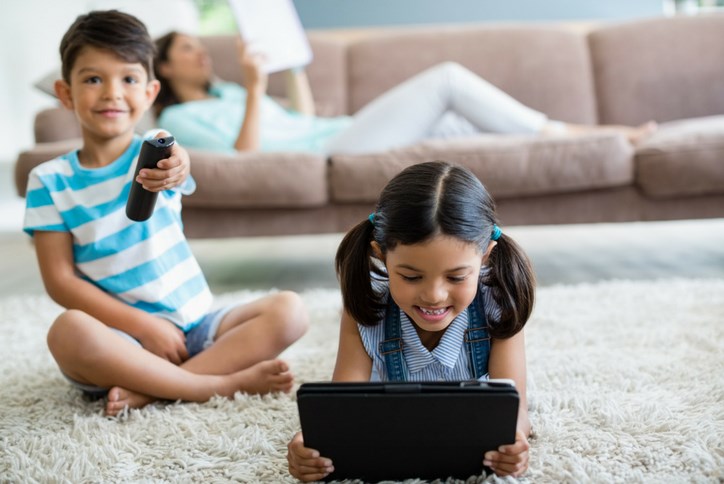
12 June . 2018
5 things to know about screen time – and how the experts manage their own kids’ screen time
A recent UNICEF study found that adolescents and young people are the most connected generation ever, with children under 18 accounting for 1 in 3 Internet users worldwide. Here’s a round-up of some of the latest research to help you decide how much screen time is best for your family.
The Goldilocks approach. Screen time has definite benefits, such as expanded access to education and knowledge, and helping young people be more engaged. Authors of the UNICEF study suggest a “Goldilocks” approach – neither too much nor too little. They suggest focusing on what kids are doing online more than they amount of time they spend.
Small screen usage is going up. Worldwide, 98 percent of households with children 8 and under have access to a smartphone, tablet or other mobile device. That’s a huge increase from 52 percent only six years ago, according to a parent survey from Common Sense Media. Kids’ screen time has held steady at 2-¼ hours a day, but they are using handheld devices more.
When screen time becomes a negative. From sneaking screen time use, to using screen time to feel better on a bad day, there are a number of warning signs that can help you tell when screen use is becoming problematic. This infographic from a journal of the American Psychological Association offers 9 tips.
The 5-2-1-0 rule. The founder of Canada’s Childhood Obesity Foundation created a 5-2-1-0 formula for his family. That means 5 servings of fruits and vegetables a day, no more than 2 hours of screen time, one hour of physical activity, and zero sugary beverages.
Screens and sleep. After a decade of research, a sleep researcher at Stony Brook University has concluded that using screens near bedtime delays falling asleep and reduces sleep quality. Rules for her own two young children include no screen time one hour before bedtime, no screens in the bedroom, and no screens as part of the bedtime routine.
The Art of Screen Time. Anya Kamenetz, author of the "The Art of Screen Time," says she boiled her conclusions down to one simple slogan after interviewing more than 500 families and dozens of experts. In the spirit of Michael Pollan’s famous food rules (Eat food. Not too much. Mostly plants.) she recommends: Enjoy screens. Not too much. Mostly together.
Nature-deficit disorder. Richard Louv, author of the bestselling book, “Last Child in the Woods,” recommends spending more time in nature to counteract what he describes as "nature-deficit disorder," characterized by the rise of obesity, depression and attention disorders. Louv cites a growing body of scientific research correlating time spent in nature with lower blood pressure and stress, and a stronger immune system.
Read the story of how one nature-loving family is taking advantage of Elyson’s parks, trails and amenities to spend more time outside and away from their screens.
